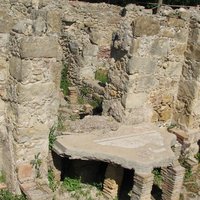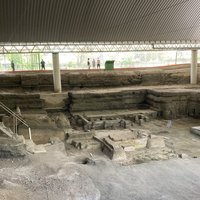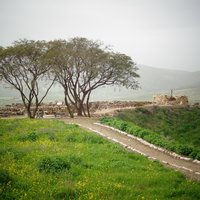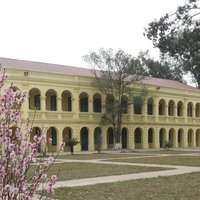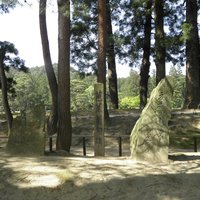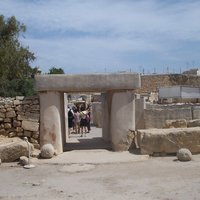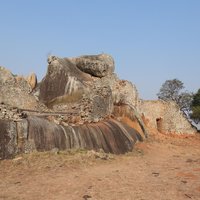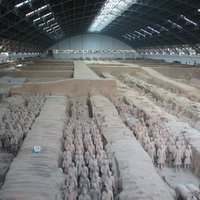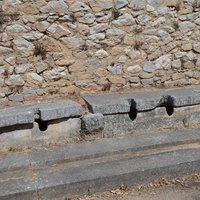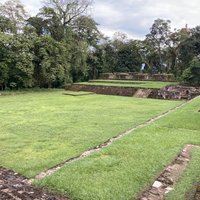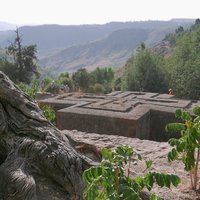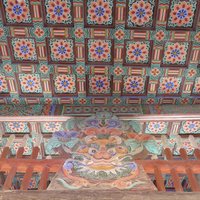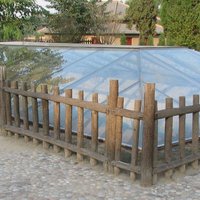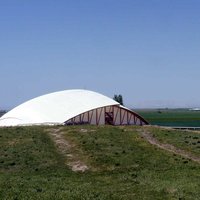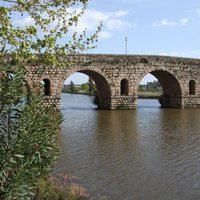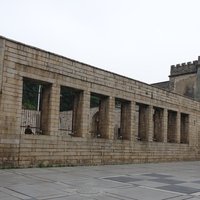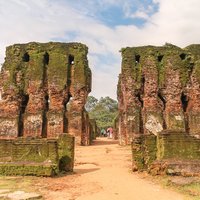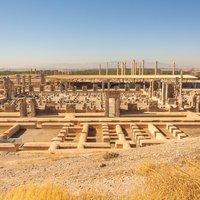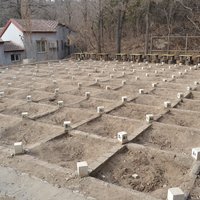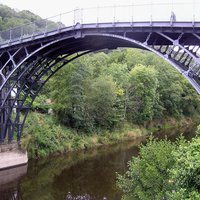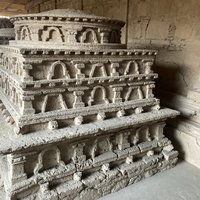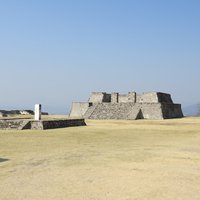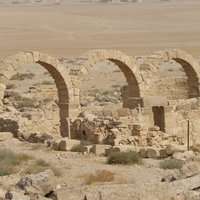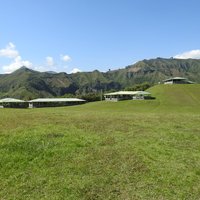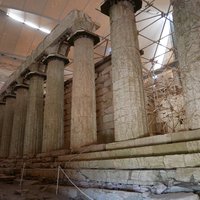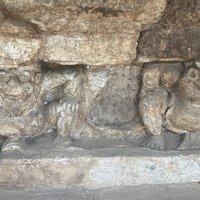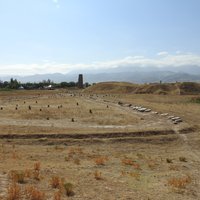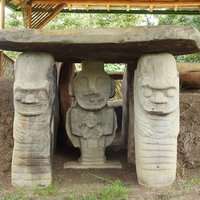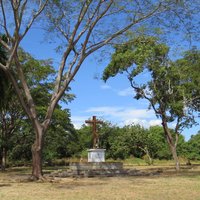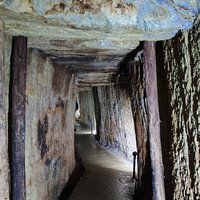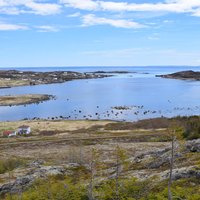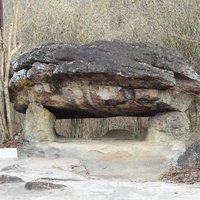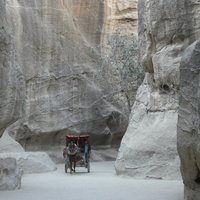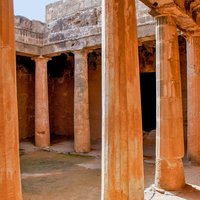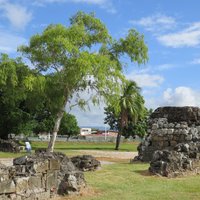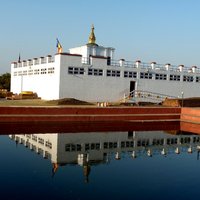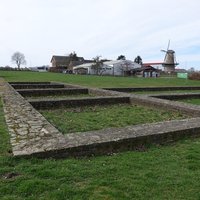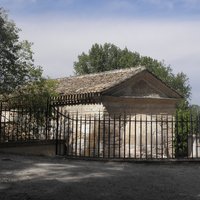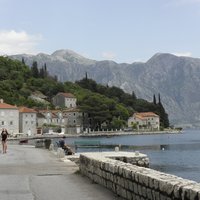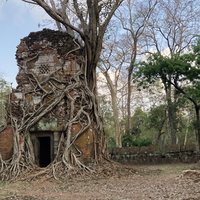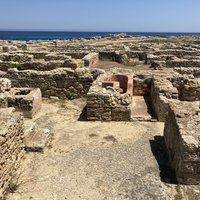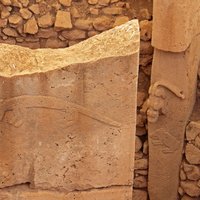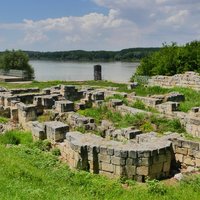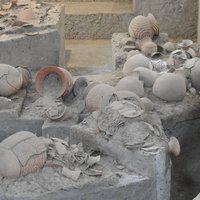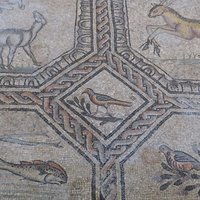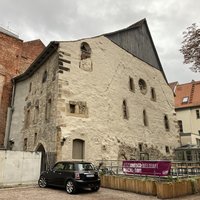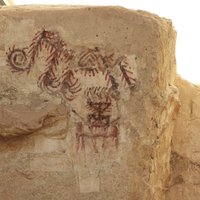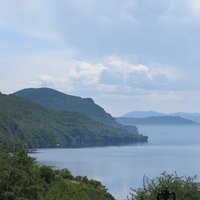Connected Sites
-
Plexi glass covering protects the mosaics
-
3 separate covered areas
-
Hatzor palace
-
Archaeological sites
-
Protective shelter of Konjikido Hall in Chusonji Temple
-
Hagar Qim and Mnajdra Temples are protected by big tents to prevent erosion.
-
The Mikvah in Speyer.
-
Both Great Enclosure and Hill Ruins hold remains of Daga Huts under a reed-covered structure.
See awhf.net
-
Complete buildings safeguard the Terracotta Warriers
-
The mosaics of the Octagon are covered by a large protective shelter
-
The stelae stand under thatched coverings
-
Supposedly temporary during restoration - in Oct 08 new structures were opened to replace others 10 years old ("The churches that were covered with shelters are: Biet medhane-Alem, Biet Mariam, Biet Masqal, Bier Ammanuel and Biet Abba-Libanos")
-
-
Archeological sites
-
"Each mound hosts a large shelter that contains the digs." (wikivoyage)
-
Covering the Roman mosaics
-
Protective shelter at the Sites of Cizao Kilns and Dehua Kilns (Nomination file, p. 404, 406-407)
-
Gal Vihara
-
The Apadana Staircase has been protected by a roof since the mid 1990s
-
"..the government built a shelter covering some 3,700 square meters around the cave. The protective shelter is an environmental-friendly iron structure with plants on the roof and a series of high-tech systems in place to monitor and protect the cave. "
See www.globaltimes.cn
-
Over the Old Furnace in Coalbrookdale
-
Necropolis of Monte Siseri: "Of the three known tombs in the necropolis, Tomb I has undergone consolidation, conservative restoration and enhancement. To prevent rainwater and animals from entering in the antechamber, where the ceiling is missing, a protective structure was built in 1990, equipped with a double-sloping tile roof, sealed with a metal hatch." A protective cover was also installed for Tomb XV in the Sos Furrighesos Necropolis. (Nomination file, p. 301, 310)
-
in Choeung Ek to protect part of excavated mass grave
-
-
Over the Rampa de los Animales
-
over St Stephen's Church and part of the Church of the Lions (Unesco website)
-
-
Covered by a large tent
-
-
Danfeng Gate Xian - the new "reconstructed" gate is in fact a protective shelter suspended over the archaeological remains which are visible inside the "new" gate. The Nomination file only shows photos of the site before the reconstruction and states "After excavation, Danfeng Gate is protectively covered by shelter, and opened for exhibition. The covering shelter was built with an architectural and artistic attempt to imitate a Tang Dynasty style." See
See www.iicc.org.cn
-
-
Several buildings
-
"A temporary shelter has been built to cover the circular funerary structure at the Hop necropolis." (ABev 2018)
-
The excavation sites have been reburied for protection, or are underwater, covered by tarpaulins. Few elements are immediately visible to the inexpert visitor. (AB ev)
-
"Shelters have been constructed over the Sīma stones at Wat Phra Phuthabat Buaban to protect them from natural erosion since these stones have delicate carvings of Buddha’s life and the Jataka stories." (AB ev)
-
Besovy Sledki
-
The Byzantine Church with its mosaics is covered
-
Mosaics
-
Salon Bolivar: The little museum is entirely enclosed by glass to protect it and is actually in the courtyard of another building, the massive Palacio Bolívar
-
Building covers the ancient ruins
-
A protective structure was built over the foundation walls of the thermal baths of Colonia Ulpia Traiana (Xanten), which imitates the ancient shape of the building and has housed the Roman Museum since 2008. (wiki)
See de.wikipedia.org
-
Castelseprio-Torba: at the basilica parts of the original floor are under a protective shelter
-
The Roman mosaics at Risan
-
"The wall paintings of Prasat Thom and the fragments of paintings were housed in a protective shelter under a temporary shed of thatch in Prasat Thom, to prevent any water ingress during rains (...)." (Nomination file, p. 173)
-
The House of Tanit is under a protective shelter.
-
The stones are protected by glass covers. A competition to design them took place in 2010 and the project was inaugurated in Dec 2011
See www.dezeen.com
-
Main excavated parts are covered by a protective roof
-
Several components are protected by shelters, e.g. the well preserved walls of the burgus of Passau Haibach (ID No 9c), Kleinkastell Oberranna (ID No 10), the bath house in Schlögen (ID No 11a) and the porta principalis dextra of the fort in Tulln (ID No 27b). (Nomination file, p. 62, 66, 76)
-
"The Ban Chiang excavation site is protected from damage with a secured shelter. " (official description UNESCO website)
-
-
The Mikveh lies under a concrete protective building.
-
The site has been protected with an innovative roofing system. (Nomination Text, p. 56)
-
The mosaics at the early Basilica are covered from the sun by a roof structure

